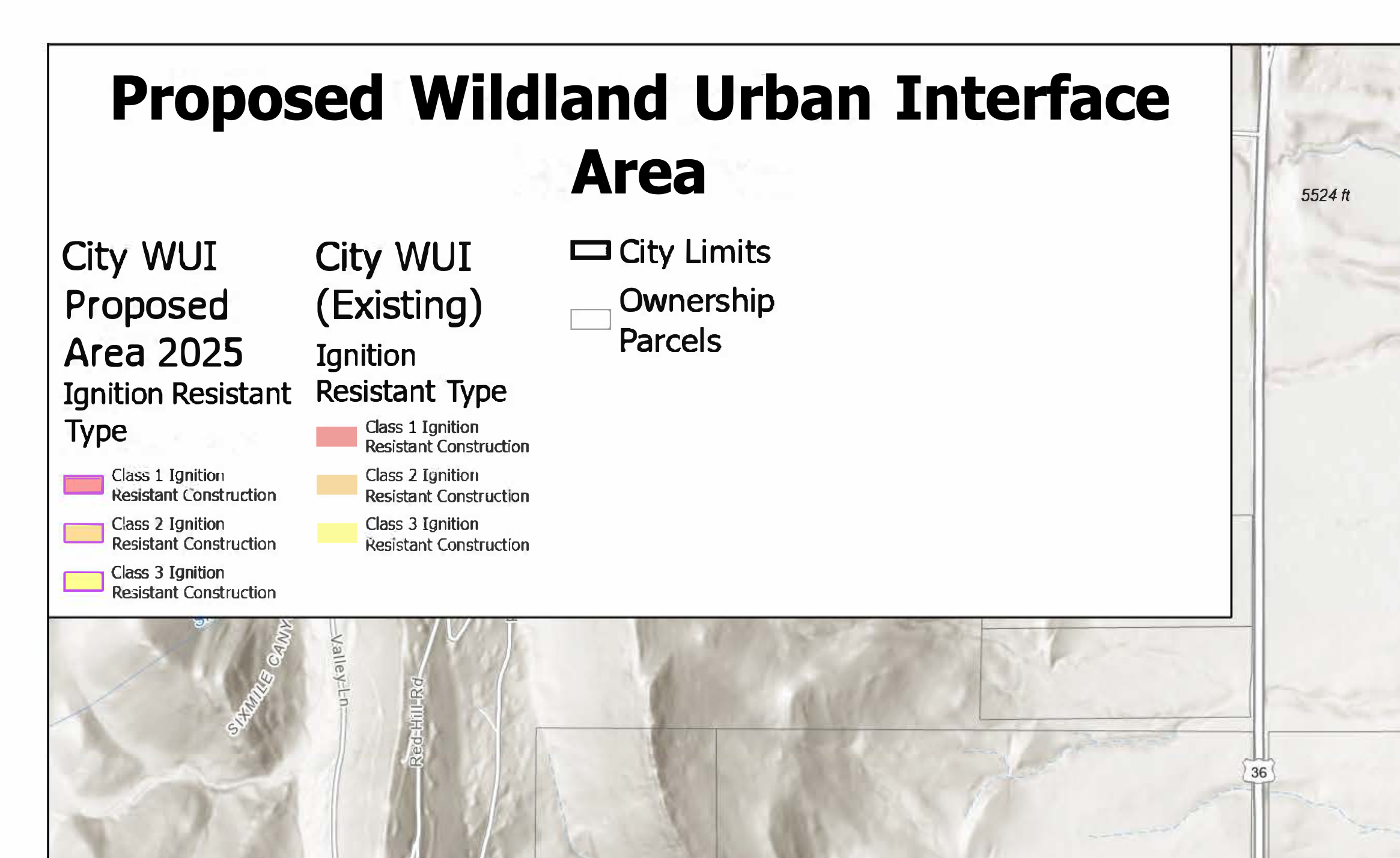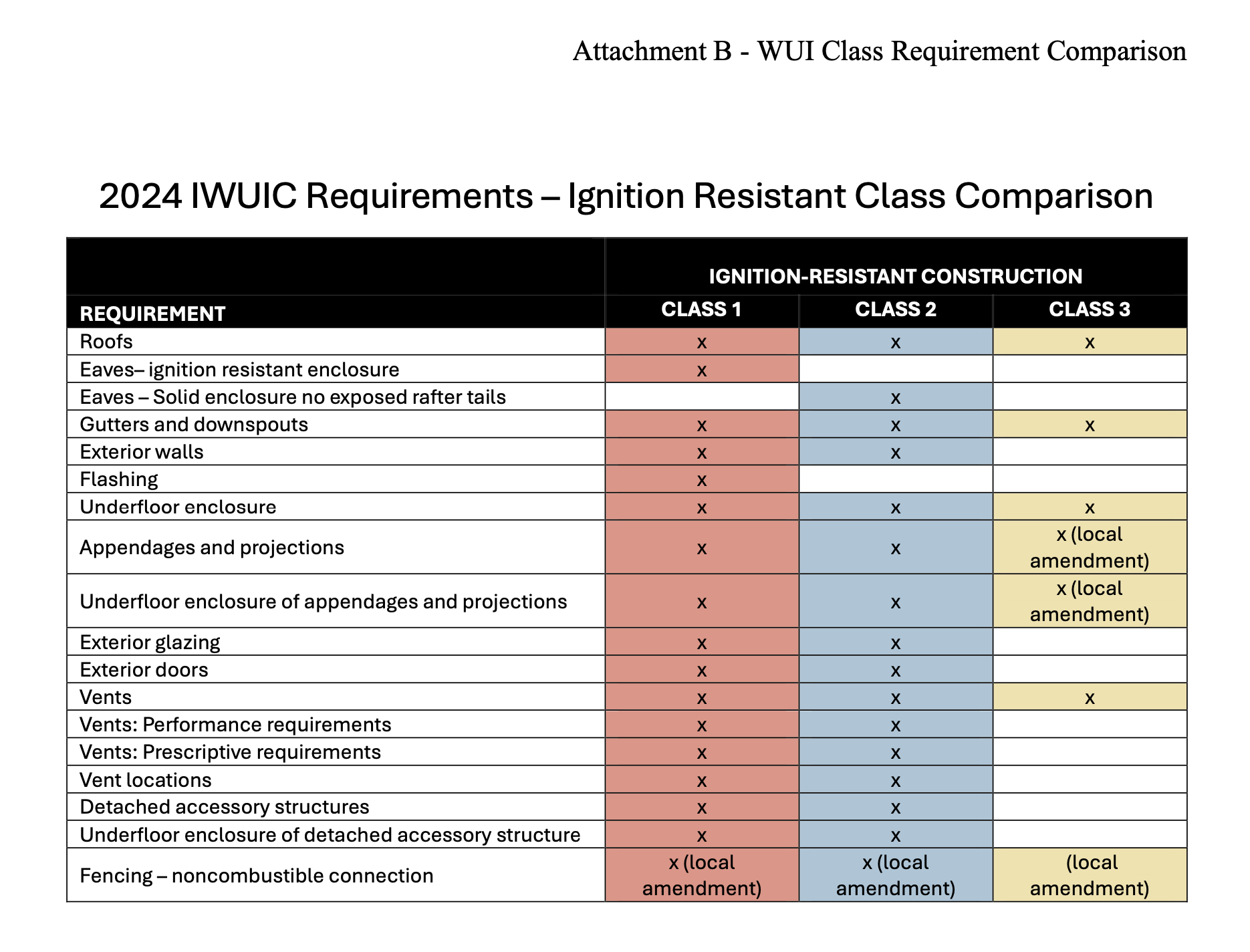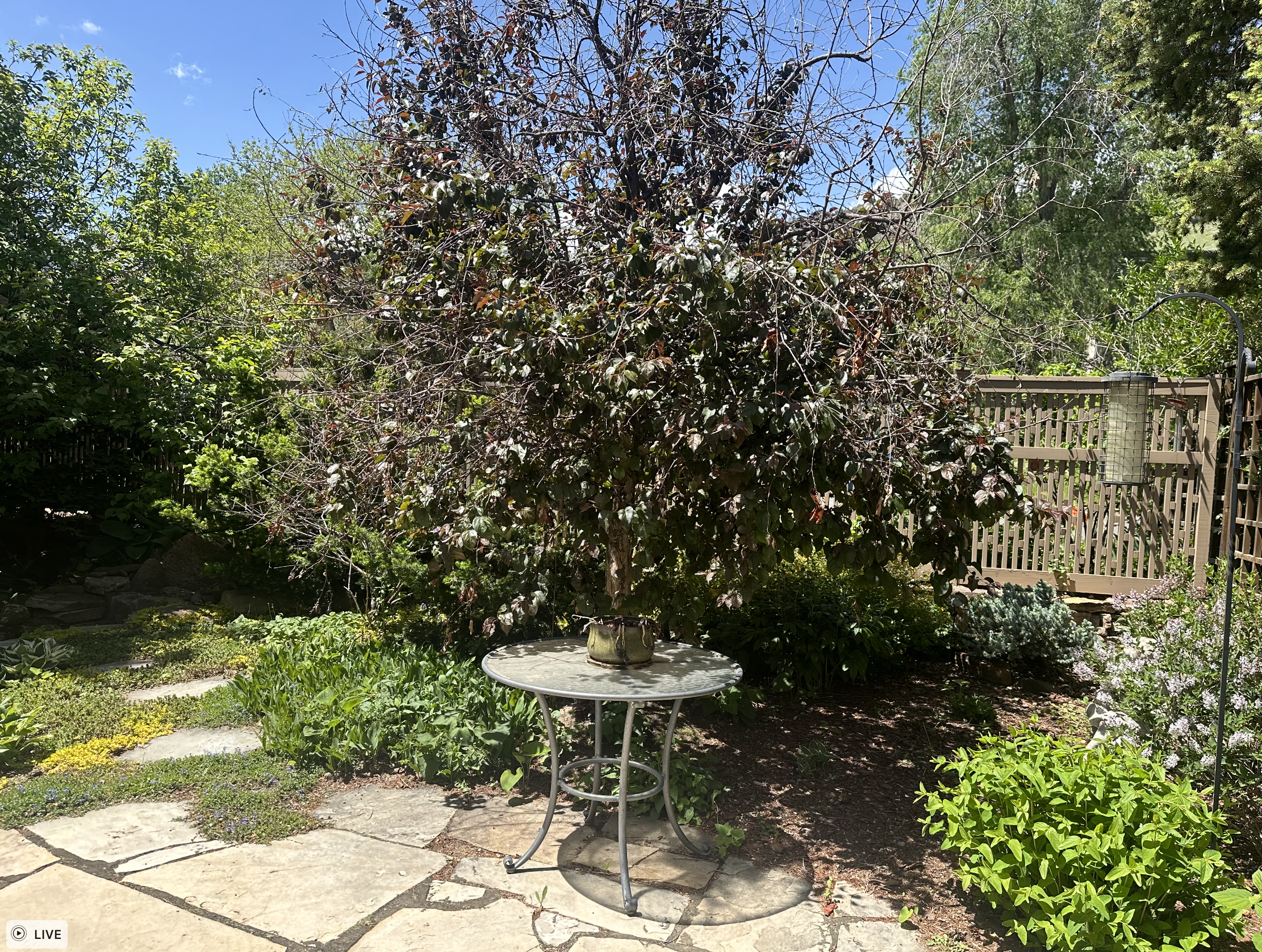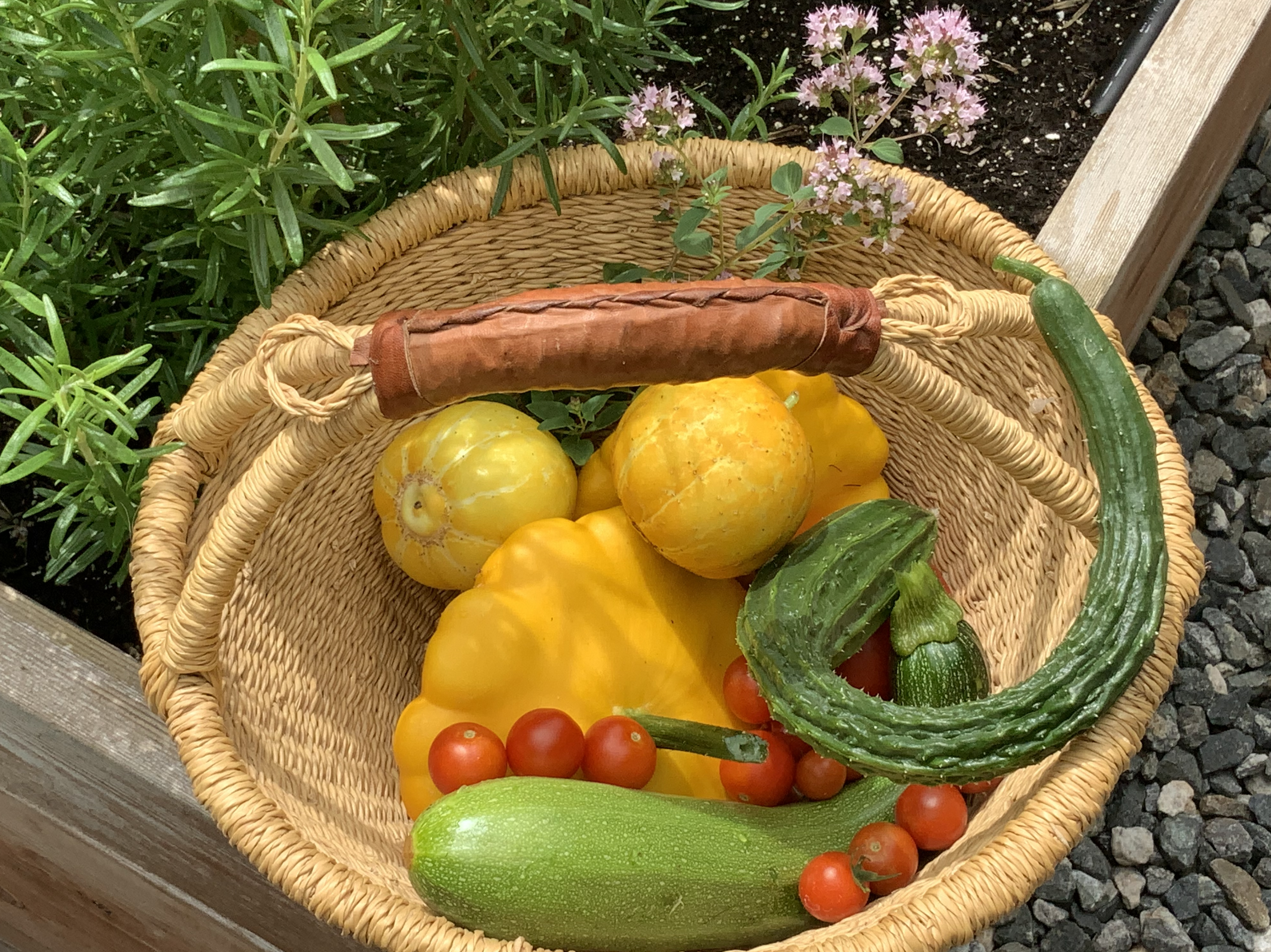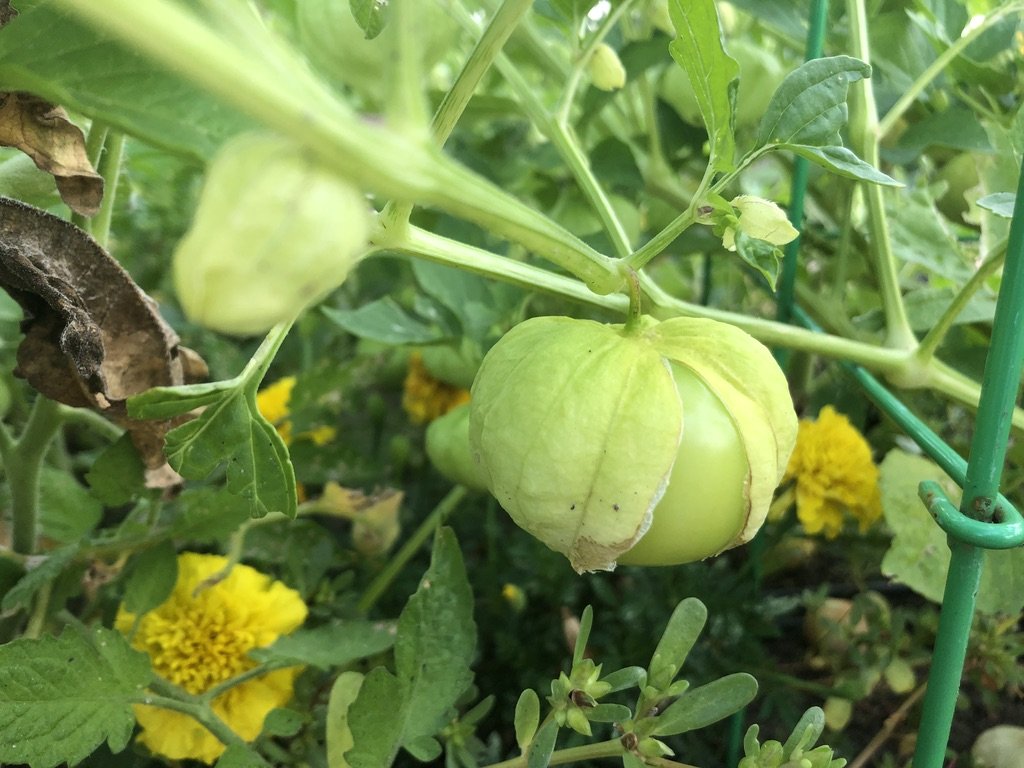2905 5th Street
Cate’s Courtyard Refresh
DESIGN | PLANTS + MATERIALS | SOIL | CARE + MAINTENANCE | RECOMMENDATIONS | RESOURCES | GARDEN PHOTO ALBUM
Your Design + Plant List Will Be Viewable Shortly…
FRONT COURTYARD DESIGN
NATIVE THEME | PICTURE GALLERIES BELOW
Mostly Native Plant List
WITH COMMON + BOTANICAL NAMES | CONTAINER SIZE | QUANTITY | VENDORS
Sample Plant List Gallery
YOUR RECOMMENDED LIST WILL BE UPLOADED SHORTLY
Vegetable Garden DESIGN By Request
Sample Materials List
EXISTING OR RECOMMENDED MATERIALS | QUANTITY OR SIZE | DETAILS | SUGGESTED SUPPLIER
Grow, Rest, Repeat
Top 6 DIY Tips For
1) SOIL
2) GROWING
3) HANDS-ON SESSIONS
4) FRUIT TREE GUILD
5) GARDEN NOTES
6) LOCAL VENDORS
SOUNDS LIKE FUN ~ LET’S GET GOING…
How’s Your Soil?
THE HEALTH OF YOUR PLANTS IS FIRST AND FOREMOST ABOUT THE HEALTH OF YOUR SOIL
COLORADO SOIL STRUCTURE + AMENDMENTS
WELCOME TO COLORADO: A HIGH ALPINE DESERT
The “high alpine desert” (high and dry) zone of our Colorado front range means that the soil here is typically a rocky compacted clay, deficient in nitrogen or other nutrients. The soil here has a high “alkaline” pH of 7.0 - 8.3, due to the high amount of calcium carbonate (free lime), a reflection of limited rainfall and rock weathering.
To adjust for this, here are the elements we can easily add to this soil to make it more hospitable and to support your garden’s beauty and bounty.
While many native plants prefer less amendment, in most garden situations your soil will greatly benefit by the right help to support the ecosystem you’re planning.
START HERE + BRING YOUR SOIL TO LIFE
In perennial beds, after spring clean up, and before adding seeds or starts, it is highly recommend to:
1) OPTIONALLY Aerate or till the existing soil. By adequately loosening up and amending the soil, you are helping to create a more suitable environment for the plants that live there. Water and Air can move more easily through the substrate for better drainage, encouraging microorganisms to cultivate healthy root systems, which are able to transport available nutrients where needed.
In wild or more native gardens, nature’s symbiotic balance is best left as undisturbed as possible, or when growing vegetables or crops it can be difficult to apply a no-till practice such as this, so amending is a suitable alternative.
BALANCE YOUR SOIL STRUCTURE WITH THESE ELEMENTS
2) Add a moisture-retaining element such as rice hulls, pearlite, or vermiculite (expanded shale). If you want to support a local reseller, these are available at McGuckins. The volume needed will depend on your square footage as well as any unique microclimate influences of note.
The gardener’s goal here is to create a loamy soil strucure (an equal balance of sand/silt/clay). We’re going for the “goldilock’s zone” of not too heavy, not too light, but just right, with good moisture retention. Here’s how to identify what general soil type you may be working with and how to balance it:
→ DENSE DIRT OR CLAY Most of the Front Range of CO has dense or clay dirt masquerading as soil. So, if you soil is overly dense, compacted, or has a high clay content, you’ll want to lighten it up. For this, you can use rice hulls, pearlite, and/or vermiculite. These elements act to retain moisture by wicking and dispersing, making it available to the roots in a more even distribution over a longer period. Coconut coir and spanghum moss also provide a lighter weight to the surrounding soil media thus aerating and lifting the density.
→ SANDY SOIL If your soil is too sandy or dry dusty silt, water may run through it too fast, or it may not cultivate the density necessary to support the kind of microbial activity that will truly nourish your plant roots. So you’ll want to create more moisture retention and build up the structure slightly. In this situation, coconut coir acts as a fine moisture retention element, or you could use vermiculite for even more retention. Consider removing a % of the existing media and/or adding a denser raised bed soil to bring the structure into balance.
For moisture balance, remember this general rule of thumb: Use rice hulls, coconut coir or perlite when you want better drainage and aeration. Use vermiculite when you want more moisture retention.
What’s Your Starting Soil Type?
Use Amendments To Balance Soil Structure
Here’s What A Healthy Balance Might Look Like
NEXT FERTILIZE YOUR SOIL WITH
COMPOST + NUTRIENTS
There is a difference between soil and dirt. Dirt can be any media such as sand/silt/clay, but it lacks the living microbes or fungal networks that create the ‘soup’ of life within which plant roots symbiotically thrive. Soil, on the other hand, can have a base of the same media, yet it is ALIVE, providing a living soup for such organisms. Soil has a balanced structure, density, and most importantly: the biodiversity necessary to support a living eco-system thriving within. Here’s how to build biodiversity and healthy structure into your Colorado soil:
COMPOST
3) Add a volume of organic compost suitable for vegetable or medicinal garden use. Start by adding a layer to the top of the exposed soil and then mixing it in. Great composts to use can be anything from Alpaca or Chicken poop from your local farm (make sure it’s not too “hot”), to bagged compost. Here are our recommended bagged planting soil blends, available at local suppliers such as McGuckins:
• The Bomb — by Paonia Soil Co
• Sheep ‘n Peat — by Earth Essentials
• Ocean Forest — by Fox Farm
FERTILIZERS
4) Add nutrients that help plants grow. Your typical fertilizers will have a blend of Nitrogen—Phosphorus—Potassium (N-P-K). Together these provide a spectrum that meets plant needs. You can also add other natural elements such as worm castings, bat guano, fish or kelp emulsion, blood or bone meal. Keep in mind that each of these has their own ratio, so make sure it’s what your plant needs before applying. We recommend the following brands:
• Root | Grow | or Bloom — by Age Old Organics
• Hemp Dress — by Key To Life
BOOST SOIL BIO-DIVERSITY
5) Add mycorrhizae (a fungus that grows in association with the roots of a plant) for help with nutrient uptake to help plants and ecosystem grow. Establishing this root-based systemic network is essential in that it helps plants attract and absorb nutrients from the surrounding soil that its roots alone would not be able to draw up. It’s like ‘nature’s wifi’— helping connect the neighborhood bio-chemically through the soil. Nature takes time to build this, and we can help speed it up by introducing the mycorrhizae.
• Mycorrrhizae — by Big Foot
ADD WATER SLOWLY AS YOU MIX YOUR SOILS
6) Slow water. Let the amendments soak down with slow watering (to avoid fast runoff) before planting. Soaking, rather than spraying, will give your soil time to sink in and begin to come to life. Make sure the water soaks deeply down and doesn’t just sit in the top few inches of your soil.
PLANT YOUR SEEDS + STARTS
7) Now your seed and starts are ready to be planted. By nurturing the soil before planting, you increase the success rate of your introduction, robustness, and longevity of your new plants, as well as contribute to a healthier ecosystem.
Additional Natural Products
CLICK HERE FOR A FULL LIST OF RECOMMENDATIONS
for horticultural and vegetable gardens
You Plant. But Do You Grow?
HIGHLIGHTS FOR CULTIVATING ECOLOGY + SYMBIOSIS IN YOUR LANDSCAPE
COMPANION PLANTING
REQUEST YOUR CUSTOM GARDEN COMMUNITY RECOMMENDATIONS
While there are many definitions of what makes a healthy plant community or ‘guild’, essentially we are looking to create a polyculture by placing species (tree, shrub, flower, vegetable, herb) that grow well together, are chemically beneficial for one another, will access nutrients for one another, as well as some that attract pollinators and/or some that repel pests.
We’ll give you some of our suggestions for your unique garden. Diversity is key, so play around with your senses — imagine what you’d like to see, smell, taste, or use, or experiment to find what suits your garden best. Here is a link to a good companion plant search, if you get curious about what would grow best with each specific species: https://www.epicgardening.com/?s=companion+plants
LAYERING
Similar to Forest Gardening, where we consider taller Overstory trees, Mid Level shrubs, and lower Plants and Groundcover— Layering involves creating different vertical spaces within the landscape or garden with varying heights and densities. Various root depths are represented, each able to access a different soil zone for bringing nutrients to the plant community. The various species that gravitate to one another and grow well together are responding to the microclimate. Your garden can be its own microclimate, as well as various larger ecological zones in the area, or your entire state. You can enhance the health and biodiversity of your garden by selecting appropriate species that grow well together in a specific location and microclimate. This symbiosis can improve the aesthetic appeal of the landscape, while providing various ecosystem functions, benefits, or yields that are greater than the sum of its parts, and positively impact the ecology and biodiversity around you. An example of Mountain or Xeric microclimate layering in Colorado might look like:
For Microclimates
Forest Garden
Overstory: Lodgepole Pine, Colorado Blue spruce, Aspen
Understory: Current, Mountain mahogany, Serviceberry
Groundcover: Yarrow, Aster, Sedum, Strawberry
Native Xeriscape
Overstory: New Mexican Privet, Pinyon Pine, Rocky Mtn Juniper
Understory: Rabbit Brush, Three Leaf Sumac, Apache Plume, Sagebrush
Groundcover: Wild Rose, Red Yucca, Spreading Daisy, Buckwheat
MULCHING
Mulch protects and nourishes soil. Mulching bare soil offers numerous benefits for plants and the overall garden ecosystem. It helps conserve moisture, suppresses weed growth, moderates soil temperature, and enriches the soil. Additionally, mulch protects against soil erosion, adds aesthetic value, and provides a natural barrier against certain pests and diseases. Here are examples of using groundcover as a soil-cover versus using a layer of tree bark or leaves as natural mulch.
LIVING MULCH Short green plants like Thyme, Sweet Woodruff, or Clover can be used to cover soil between taller plants and keep weeds from growing, while enriching the soil and attracting beneficial insects. In fact, many of these are prized for their use as lawn alternatives. Check your microclimate requirements and each plant’s growing preference to make sure they will grow where you intend.
TREE BARK Gorilla hair mulch is a hairy type of shredded tree bark widely used as a garden mulch. Depending on your preference for using weed barrier material, this is a good one to use a strip of weed barrier or weed mat under for smaller walkways. This mulch settles down into a matt that is wind resistant and at the same time creates a soft thick layer to walk on that doesn’t allow as many weeds to propagate as gravel.
Getting Started…
Select Your Desired Garden Tip + Try It Yourself
We Suggest The Following Unaffiliated YouTube Channels As You Learn The Art/s Of
Soil
Next Level Beauty + Inspiration
LET ME INTRODUCE YOU TO LIZIQI - A NATURE GODDESS INCARNATE IN THE RURAL CHINESE LANDSCAPE
Hands-On GARDEN CARE Sessions
Schedule A Hands-On Garden Care Session with Rebecca. She’ll come garden with you one-on-one. You can learn conversationally while you pick up what to do with ‘muscle memory’. Ask your questions and get more than information…. discover a new perspective and enjoy your garden more!
Book Your Next Garden Care Session Now!
Additional Garden Maintenance Tips
FREE Tree Care guide with Plant Talk Colorado
This link takes you to a separate website where you will find both a fact sheet— and a free database— including more How-To videos, and timely information on your choice of horticultural topics for growing on the Colorado front range.
Sponsored by Colorado State University Extension, Denver Botanic Gardens, and Green Industries of Colorado.
Natural Weeding Options
Click these separate links to read more or find out DIY tips
• Best Applications for Vinegar DIY
• Pulverize Weed Killer (Natural) Recommended Product
Guilding Is For More Than Gold…
Create A ‘Plant Guild’ For Your Trees!
SEE SAMPLE GUILD FOR FRUIT TREES — DECIDUOUS TREES HAVE FAVORITE COMPANIONS AS WELL TBA
Images courtesy of Introduction to Permaculture by Bill Mollison showing spatial layout.
Sample Guild list(s) courtesy of Rebeccas Gardens for Front Range microclimate species.
Sample Apricot Guild
What Is A Plant “Guild”? How Do Plants Work Together?
DEFINITION A plant guild is a community of plants that grow and support each other by recycling nutrients back into the soil, providing shade, and conserving water, attracting beneficial insects, repelling pests and diseases, building soil, and preventing erosion. In other words, they’re like each other’s best friends or friend circle, helping to share their unique skills and benefit the collective in their little location (aka micro-climate). They each help one another to be their best in the bio-chemical and ‘social’ environment.
DRIP LINE LAYOUT Main guild plantings are spaced most prominently within the circular area that defines the ‘drip line’ of the tree. The drip line is the area within which rainwater drips down from the trees leaves, forming a circle on the ground around the outer edge of the trees branches, mirrored by its root system underground. Just within the drip line is the area where the roots of the tree will most actively integrate with companion plants. This is because the tips of the roots are the most active and are always located near the drip line, reaching further out as the growth of the tree evolves. Specifically, this is where the tree has the most synapses for interchanges within the soil, including water and nutrient uptake. Other plantings may fill the space outside the drip line or the space that defines the garden between trees.
Aesthetically, we encourage your creativity! But in addition to your garden artistry, here are the logistical components that may help you decide what will go where for the needs of your unique guild or garden:
The 6 Main Balancing Components To A Guild
√ ATTRACTORS Great for bringing pollinators to the garden! >> Cosmos, Catmint, Sunflowers, Valarian, Sages/Salvias, Zinnias, Snapdragons, fennel, dill, lavender
√ REPELLERS Pest deterrents are a must as well. >> Allium (aka onion-family like Leeks, Chives), Garlic, Oregano, Geraniums, Marigolds, Mums, Daffodills, etc
√ NITROGEN FIXERS The ‘fertilizer’ for your tree, pulling nitrogen into the soil. >> Clover, Vetch, Legumes (clovers, beans, peas, lentils, peas, chickpeas), silverberrry
√ MULCHERS Can be cut and sprinkled around the tree like mulch which helps with water retention and soil protection. >> Comfrey, Vetch, etc, or hay or woodchips.
√ ACCUMULATORS Rejuvenate the soil by pulling up and replenishing nutrients. >> Borage, Comfrey, Chickweed, Yarrow, Nettle, Strawberries, Sorrel, Vetch etc
√ SUPPRESSORS Help suppress weed growth, like ground covers with interwoven root systems. >> Clover, Thyme, Sedum, Strawberries, etc
Pollination + Fruiting
It is natural for some apricot trees to be alternate-bearing, meaning they produce fruit every other or third year. This depends on many integrated factors:
Pollination: Some apricot trees can pollinate themselves, but many rely on cross-pollination, which can improve the quality and quantity of the fruit. :
Self-pollination
Apricot trees are self-fertile, which means they can be pollinated by pollen from the same flower or another flower on the same tree. However, some varieties, like the Vivagold cultivar, are not self-fertile.
Pollinators
Pollinators, like bees, are usually responsible for pollinating apricot trees. However, cold temperatures, rain, and wind can reduce pollinator activity.
Pollinator plants
If there aren't enough bees or beneficial pollinator insects, you can plant pollinator-attracting plants in your garden or get a beehive
Weather: Early seasonal spring frosts, such as Colorado is famous for, can freeze blossoms that do not transform into fruit. Likewise, heavy rain or wind can knock buds off the tree before fruit matures.
Temperature: Apricots need 300 hours of temperatures below 45°F. Colorado sees extreme temperature fluctuation, which may sometimes interfere with fruiting.
Thinning: Thinning the tree (in spring) for proper light, air, and growth will cultivate the best structure to support fruit production. If the tree isn't thinned, it might produce a large crop one year and a small crop the next.
Watering: Too much or too little water at bloom time or while the fruit is maturing can prevent the tree from producing fruit.
Nutrients: Fruit trees require additional nutrient density to support production. A lack of nutrients, like phosphorus, can prevent the tree from producing fruit.
Age: Older trees require more care and maintenance to produce fruit, and may eventually stop producing fruit altogether.
Fertilizing
Fertilize your Apricot tree in early spring, after the snow melts and before new growth begins.
Use a balanced N-P-K blend with additional nutrients that support microbial soil health and root uptake, including:
Nitrogen: The primary nutrient used by apricot trees, nitrogen promotes green growth. It's leached from the soil by normal growth, so it needs to be replaced with organic or synthetic compounds. A lack of nitrogen can cause leaves to turn pale or reddish, become narrow or shrunken, or develop dead spots.
Phosphorus and potassium: These macronutrients are also important for apricot growth. Potassium is especially important for the size and weight of stone fruit.
Calcium: Improves fruit growth.
Iron: Helps increase fruit size and weight, and crop yields.
Copper and zinc: Micronutrients that apricot trees need.
Magnesium: A deficiency of magnesium can cause apricot leaves to look abnormal. Epsom salts can help correct this deficiency
You can read more about this in the section below on BUILDING SOIL…
Our plant recommendations are selected with your microclimate in mind— including sun, soil, and water conditions, species variety, seasonal fruiting or bloom times, companion planting, nitrogen fixers, pollinator attractors, natural pest resistance, aesthetics and overall balance. With over a decade in the industry working on the front range in this high alpine zone, we believe these selections are well suited to bring your garden to life. Planting can be partly intuitive and also counter intuitive. If you have any additional questions, just reach out.
Garden Notes
GARDEN NOTES can be a key part of the GARDEN CARE monthly series by request. Keeping notes about your perennial garden offers numerous benefits, from planning and record-keeping to identifying successes and failures, and even improving your understanding of your garden's microclimate and ecosystem. These notes can help you anticipate future challenges, optimize your gardening practices, and ultimately, create a more thriving and enjoyable garden.
A regular garden journal or note taking practice encourages a broadening of your perspective. To become aware of the wider context in which your garden is an integral part can be in an invaluable resource for acknowledging your own learning and experience, which can help you become a more confident and knowledgeable gardener and steward of the land.
Here, we’ll identify the top uses for recording what’s happening in your garden throughout the seasons. This will benefit you through observation, discovery, and review.
Here's a more detailed look at the advantages of GARDEN NOTES:
1. BENEFITS OF GARDEN NOTES
Knowing what you're growing:
Our Design + Plant List can map and identify your existing plants. This can help you track what plants you've chosen and where they are located, helpful for planning purposes.
Planning ahead:
We’ll make notes after each GARDEN CARE session. By documenting the experience and what we feel or notice as well as what we accomplish, you can hopefully learn from past successes and failures, and make informed decisions about future planting and design choices.
To Do List - By Season
We may identify a short TO DO LIST for your DIY garden activities, by season. For example, you can check your GARDEN PAGE for a good reminder when specific actions need to be done (like fertilizing or scouting for pests). This can help ensure your plants receive the care they need or offer options for troubleshooting.
Tracking biodiversity and shifting garden development:
Documenting species or guild growth and development can help you understand how your plants are responding to their environment and make adjustments as needed.
2. OBSERVE OVER TIME FOR A GREATER UNDERSTANDING
Microclimate and ecosystem:
By keeping notes on the elements, weather conditions, soil types, and pest or disease issues, you can better understand the unique characteristics of your garden and how they affect your plants.
Plant characteristics:
As you observe your perennials, you'll learn their individual needs, including their bloom times, growth habits, and preferred conditions.
Pollinator + Animal activity:
As you observe the pollinating insects and other neighborhood animals or wildlife in your garden through the seasons, you’ll get to learn more about how your microclimate is interacting with the neighborhood and wider ecology.
3. NATURALLY IMPROVE
Select the right plant ‘guilds’ and placement:
By experimenting with plant placement and then observing growth and behavior, you can better identify optimal ‘plant guilds’ and idal locations for different species. This helps create a more balanced, biodiverse, and visually appealing garden.
Improving irrigation and soil:
Trees require a different watering schedule than shrubs, perennials, or ground cover. And some native species require even less water or amendment than other climate adapted species in your garden. Knowing the needs of your species or ‘plant guilds’ and their placement in the most suitable area or microclimate is key. We can discuss and take notes on watering schedules, best irrigation practices, adjusting soil structure for water retention or drainage, amending with compost or other nutrients. We always recommend speaking with your irrigation specialist to confirm.
Adapting to changing conditions:
As your garden develops cyclically, your listening, observing, interpreting, and long term memory develop with it. You can use your GARDEN NOTES to help recall and plan additional beneficial species to balance your ‘plant guilds’, identify what to maintain, move or remove, and assess healthy preventative measures where needed.
Local Nurseries + Vendors We Recommend
GET YOUR PLANTS OR PRODUCTS LOCALLY
Find your seeds or plant starts here, as well as tools, materials, and more! We’re pleased to share the health and the wealth of opportunity among these associations from our many professional and social circles. Rebecca’s Gardens Design makes it our goal to stay as consistent as possible with the larger picture holistic ecological values for plants, people, and our planet. Thank you for your commitment to sourcing biodynamic or organically grown plant species or varieties, soil, or other products.
Information About Boulder’s Firewise Strategy
AS OF MAY 2025
Your Boulder Address is recommended to follow a Class 3 (Low) Strategy for reducing risk of fire
See More of the Wildland Urban Interface (WUI) PDF Update here (CLICK THE LINK TO SEE MORE OF THIS DOCUMENT ONLINE)
According to publically available records, City of Boulder - City Council Agenda - Meeting Notes dated April 17, 2025, a map and details intended to reduce the risk of potential fire is now available for assistance with requirements around planning landscape and construction.
Your Boulder address is in a CLASS 3 area (the lowest risk) for fire-wise appropriate landscape and construction. See the requirements below for reference.
Low-Flammability Landscape Plants
A strategy offered by Colorado State University Extension
Fact Sheet 6.305 | Wildfire Mitigation Series, Landscaping and Planting (CLICK THE LINK TO SEE MORE OF THIS DOCUMENT ONLINE)
Rebecca’s Gardens & Design offers you informed recommendations on Landscape Design & recommended Plant species or lists to balance your goals with nature’s. As a general disclaimer, we cannot be held liable for any hardscape or landscape design, plan, recommendation, or installation at any time, due to the many variables, unpredictability of events, and multiple perspectives related to risk of wildfire. Rebecca’s Gardens & Design is not directly affiliated with these organizations or the opinions presented here. Thank you for planning your garden with safety at heart.
Your Photo Album
Before
Eco-’Social’ Support For Your Garden
Garden Inquiry: Why do squirrels eat the bark off a fruit tree — like a cherry or apricot?
Squirrels may primarily eat the bark of fruit (or other) tree to access the nutritious cambium layer underneath the bark, which is rich in sugars and nutrients, or to satisfy a nutrient deficiency. Rather than actually eating the bark itself; they often strip away the outer bark to reach this layer, especially when food sources are scarce or during the winter months when other food options are limited; this behavior is also sometimes used to maintain their teeth by gnawing on the bark.
Recommendation: Put out a cute squirrel feeder during fall and winter months, separate from the bird feeders. Side benefit may include the joy of observing their cute antics.
Click Here To Check Out This: SQUIRREL PICNIC TABLE
We’re so excited for your gardening journey this season! May your plants and hearts grow in abundance, wisdom, and joy. May you learn from experimentation and celebrate your adventures. And just like Life, gardening is a Journey…remember that who we become, what we create, and how we enjoy the process on the way to our destination is the real treasure. So try something new, do your best, and you know where to reach me if you need any help, have any questions, or want to try out your ideas along the way. Enjoy the gift of every season!
~ Rebecca
A Fun Harvest Mid-season 2020
Tasty ground cherries


























































































































